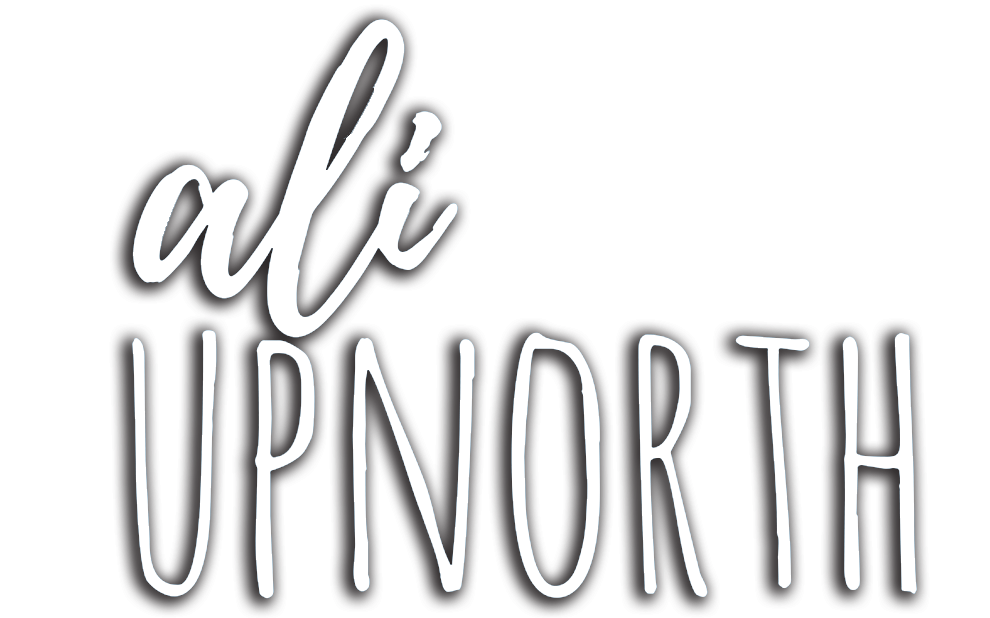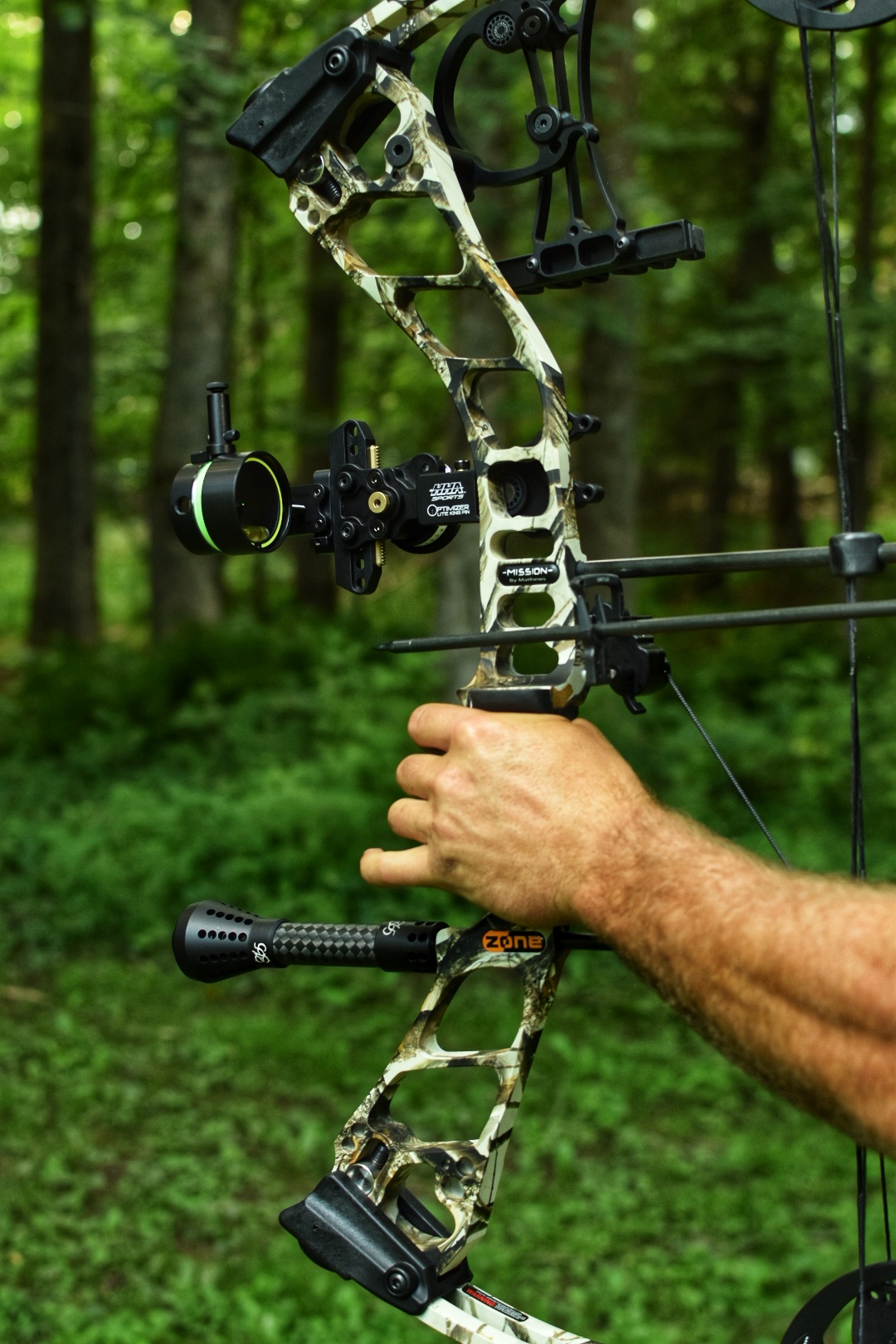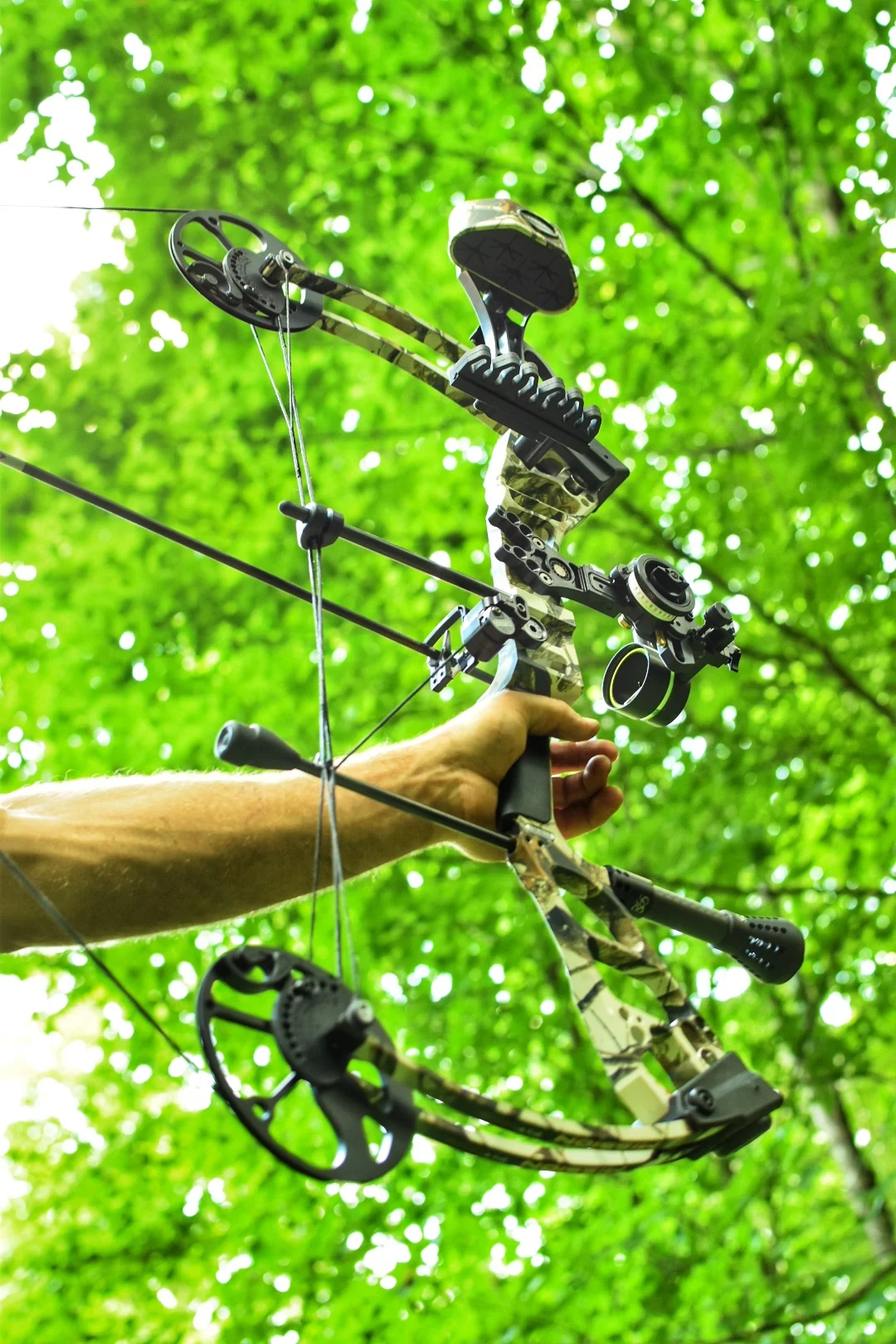If you're like me and you've grown up familiar with whitetail hunting but you're hoping to plan a hunt out west, this list is for you. Last year, I ventured on my first-ever, rifle elk hunt in Craig, Colorado. I literally learned about the hunt only TEN DAYS before I left; I had to scramble to find the correct stuff to pack. This year, I'm preparing for my first archery elk hunt in Carey, Idaho. I am by no means a western hunting expert but, by sharing what I've learned along the way, my hope is to help out other non-western hunters in a pinch.
Our 2017 Ladies camp in Craig, CO. The second night, it snowed eight inches.
Here's the 5 most important things this midwestern gal learned to pack for a western elk hunt:
1. Weapon Tips
This may seem like a no-brainer, but without it, you don't have a hunt!
Rifle: The best type of rifle for hunting in the mountains is a bolt action rifle, preferably at least a 30.06. Bolt action rifles tend to be more precise because they have fewer moving parts, which means they also have a lesser chance of jamming up. A .270 bolt action also works for Elk hunting. I actually decided to borrow a bolt action Ruger American .270 from my cousin for this hunt because the 30.06 rifle I use for deer hunting in Minnesota is a semi-automatic.
Bow: This year I'm preparing for my first Archery Elk hunt in Idaho. Believe it or not, I'm actually bringing two bows. I'm bringing my Mathews Chill SDX and my Mission Zone. I recently blew up my Mathews and know that twigs can get into cams or accidental dry-fires can happen. My Mission Zone is also adjustable in draw weight (13-70 lbs) and draw length (19-30"), so it is the perfect back-up bow for everyone in my hunting party.
Other things to keep in mind when archery hunting out of state...
Make sure you know the minimum draw weight limit for big game in the state you're hunting. In Idaho for the 2018 season for example, the draw weight minimum is 40 lbs.
2. Ammunition or Arrows
Ammo: As my friend Mike would say on our trip, "it only takes one bullet". HOWEVER, be sure to have plenty of ammo with you. When shopping for ammo for your rifle, look for big game ammo. For the .270 Ruger, I bought Federal Premium Nosler Partition in 150 grain. My advice would be not to go with the cheapest option because when it comes to ammunition, quality matters. Cheap ammo dirties a rifle quicker and, if you don't keep it clean enough, could cause a jam or other issues. But, for the process of sighting in, feel free to burn through the cheap stuff in the same grain; just clean your firearm when you're done.
Arrows & Broadheads: Bring plenty of arrows! For my upcoming elk hunt, I will have at least 12 arrows; six in my quiver with me, and six back at camp. As a bowhunter, you may already know that the best arrow for you depends on your draw weight and what you are planning to hunt. I originally bought the .400 spine Easton Axis arrows. They were recommended to me by my local archery shop (my cousin and brother will also be using them). Although they are good arrows for elk hunting, I found other arrows for elk that are actually meant for lower poundage shooters.
At this point, I'm shooting 50 lbs. The arrows I found are the Carbon Express Mayhem DS Hot Pursuit in size 250. They are .400 duel spine, meant for better accuracy and speed retention. The rear spine is lighter and stiffer, making it faster to spin, while the front spine is heavier for accuracy.
When choosing your broadheads, there are couple things to keep in mind. Does the broadhead fly true when you practice with it? What are the laws in the state you're hunting in? Are mechanical broadheads legal? In the state of Idaho, for example, only fixed broad heads are legal. I chose to go with Muzzy Trocar 100 grain. They are fixed heads, fly true and, to be honest, I've seen other hunters harvest successfully with them.
3. Boots
Make sure your boots are made for walking! The sole and tread of the boot are very important. Look for high-top, waterproof hiking boots with outsoles made for tough terrain, e.g. air bob bottoms or vibram-soles. Generally in the mountains, it can snow any time of year. For my rifle elk hunt last year, it was mid-October and it snowed 8 inches our second night. I was really glad to have 400 gram boots (I used the Pow Pow III Ultra Dry from Vasque). They were warm enough to trudge through the snow, but light enough that my feet didn't sweat very much.
Be sure to do your research and read reviews. Not only should you look at the reviews on the website, but you should also look for more in-depth reviews from sources like Rokslide.com; western hunting gear reviews are their specialty.
This year, I'll be in Idaho at the end of August and temps will still be summer-like. Because of the heat, I chose to go with the uninsulated Danner Wayfinder boots and am in the process of breaking them in. So far I love the fit! My husband, brother, dad and cousin all bought the uninsulated, men's Danner Pronghorn boots for the trip.
FYI: I'll be writing a full review of the Wayfinders for Women's Outdoor News later this fall, so be sure to watch out for it!
4. Binoculars
A good pair of binoculars are not cheap, but definitely are worth the investment. Glassing for elk is imperative to the success of a spot an stalk hunt. Your eyes will get tired pretty quickly if you don't have the right binos. The 10x40mm glass is probably the best overall binocular for elk hunting. There are a few notable brands out there: Vortex, Leopold, Mavin, Zeiss, Swarovski etc.
I have the Vortex Crossfires ($149). They worked well for me, especially for the price point. My friend Alex has the Vortex Viper HD 10x42 ($499), and I can definitely tell the difference in mine and the HD. However, the price difference is about $350 more than the Crossfires. On the flip side, this is one item that you should spend the money on only one time, the first time. If you plan to do more than one hunt out west, good binos are a worth while investment that will last your lifetime. Also, if it has been a while since you’ve had your eyes checked, it might be a good idea to get it done beforehand.
5. Range Finder
Having a range finder is very helpful for bow hunting whitetail, but it is not actually necessary. If you sit in a deer stand, you can easily pace out your yardages and mark a few trees for reference. Spot and stock hunting, specifically for elk, is very dynamic. A range finder is a necessity. Ideally, you'd want a rangefinder that goes out to 1000 yards. Not that you would make an 1000 yard shot, but you'd want to be able to spot the animal in order to know the distance you'll have to stalk. That said, if you have a rangefinder that goes out to at least 500 yards, you should be okay. For my hunt, I'm bringing the Ranger 1300 ($299) by Vortex Optics; it's capable of ranging up to 1,300 yards. Another, more affordable, option would be the Vortex Optics Impact 850 ($199), which ranges up to 850 yards.
There's more to pack, of course, but these are the items I believe to be key to a successful hunt out west. Good luck this season!
Ladies Elk Camp 2017
Last year's rifle elk hunt in Craig, CO was an all-women's hunt organized by one of the women, Sandy Austin, as well as Pat McCullen, a regional Director for the Rocky Mountain Elk Foundation. Pat and Sandy's husband, Mike, came along to share their knowledge and also acted as the camp chefs. (Let me tell you right now, that was awesome!) I'll write future stories about this trip soon :)
Also, stay tuned for a full packing list for my Idaho early season archery elk hunt.













